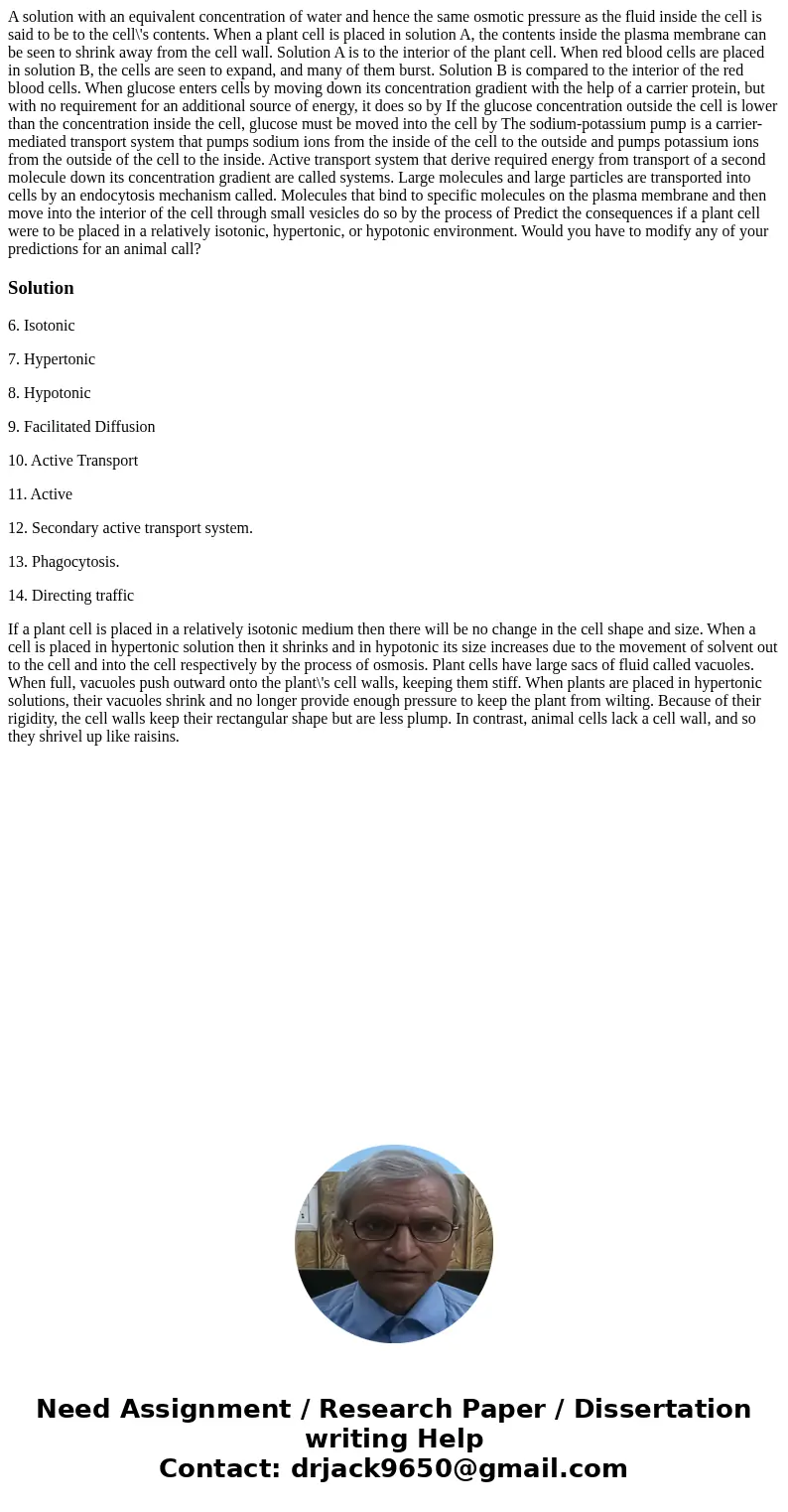A solution with an equivalent concentration of water and hence the same osmotic pressure as the fluid inside the cell is said to be to the cell\'s contents. When a plant cell is placed in solution A, the contents inside the plasma membrane can be seen to shrink away from the cell wall. Solution A is to the interior of the plant cell. When red blood cells are placed in solution B, the cells are seen to expand, and many of them burst. Solution B is compared to the interior of the red blood cells. When glucose enters cells by moving down its concentration gradient with the help of a carrier protein, but with no requirement for an additional source of energy, it does so by If the glucose concentration outside the cell is lower than the concentration inside the cell, glucose must be moved into the cell by The sodium-potassium pump is a carrier-mediated transport system that pumps sodium ions from the inside of the cell to the outside and pumps potassium ions from the outside of the cell to the inside. Active transport system that derive required energy from transport of a second molecule down its concentration gradient are called systems. Large molecules and large particles are transported into cells by an endocytosis mechanism called. Molecules that bind to specific molecules on the plasma membrane and then move into the interior of the cell through small vesicles do so by the process of Predict the consequences if a plant cell were to be placed in a relatively isotonic, hypertonic, or hypotonic environment. Would you have to modify any of your predictions for an animal call?
6. Isotonic
7. Hypertonic
8. Hypotonic
9. Facilitated Diffusion
10. Active Transport
11. Active
12. Secondary active transport system.
13. Phagocytosis.
14. Directing traffic
If a plant cell is placed in a relatively isotonic medium then there will be no change in the cell shape and size. When a cell is placed in hypertonic solution then it shrinks and in hypotonic its size increases due to the movement of solvent out to the cell and into the cell respectively by the process of osmosis. Plant cells have large sacs of fluid called vacuoles. When full, vacuoles push outward onto the plant\'s cell walls, keeping them stiff. When plants are placed in hypertonic solutions, their vacuoles shrink and no longer provide enough pressure to keep the plant from wilting. Because of their rigidity, the cell walls keep their rectangular shape but are less plump. In contrast, animal cells lack a cell wall, and so they shrivel up like raisins.

 Homework Sourse
Homework Sourse